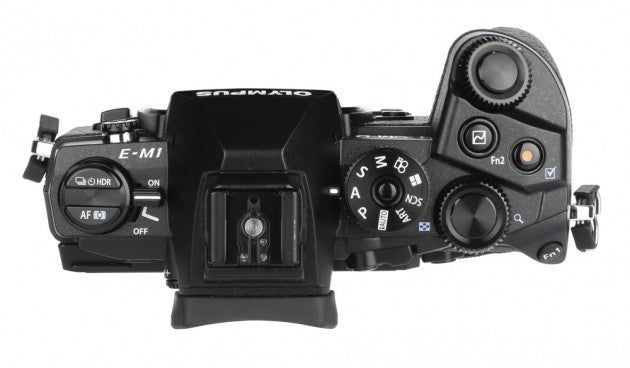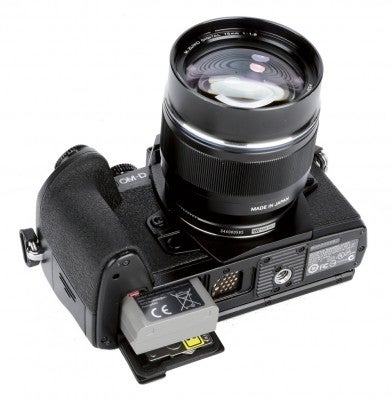We take a look at the key differences between the latest pro Olympus CSC, the OM-D E-M1 Mark II, and its predecessor
The new Olympus OM-D E-M1 II was one of the big releases to be announced at Photokina 2016. It’s due to be released onto the market very soon, with a price tag which is a substantial increase from its predecessor’s launch price.
But is that increase justified? We take a look at the key differences between these two cameras.
Olympus OM-D E-M1 Mark II vs Olympus OM-D E-M1 Mark I: Sensor

Both of the cameras naturally use a Four Thirds sensor, but the Mark II version sees a bump in resolution up to 20.4MP, the favoured resolution of choice for most current Four Thirds cameras. By comparison, the older camera had a 16.4MP sensor.
Olympus OM-D E-M1 Mark II vs Olympus OM-D E-M1 Mark I: Image stabilisation

Olympus OM-D E-M1
Probably the biggest key selling point of the newer camera is the fantastic improvement in image stabilisation that it offers. When you combine it with one of the Olympus PRO lenses you can enjoy up to 6.5 stops of exposure compensation, allowing you to shoot for an incredible two seconds handheld without resulting in blurry images. When Olympus were originally touting this figure around, it sounded a bit like hyperbole, but it turns out that it really does work. By contrast, the original OM-D E-M1 offered around four stops of compensation – which is still pretty good, and certainly good enough if you don’t tend to want to use slow shutter speeds regularly.
Olympus OM-D E-M1 Mark II vs Olympus OM-D E-M1 Mark I: EVF and Screen

On paper, both the EVFs on these models look pretty much identical. However, the big change comes in redesigning the newer model’s EVF to be able to cope with a fast frame rate – it now has continuous live view even when shooting at 18fps. The original OM-D E-M1’s screen tilted, but the newer version fully articulates, which is a bit more helpful when shooting video, or indeed, selfies and group shots.
Olympus OM-D E-M1 Mark II vs Olympus OM-D E-M1 Mark I: Video

Although perhaps not aimed quite so squarely at videographers as some other cameras on the market, the OM-D E-M1 Mark II never-the-less has some interesting video specs. It can shoot at 4K, including Cinema 4K at 24fps. The image stabilisation that works so well for stills is also available to use for video, meaning you can record shots handheld without necessarily having to use complicated and expensive rigs to keep your footage steady. The older Mark I camera was capable of shooting Full HD video.
Olympus OM-D E-M1 Mark II vs Olympus OM-D E-M1 Mark I: Focusing

Olympus says that it has redesigned the focusing system for the Mark II completely. It now has 121 all cross-type AF points across the sensor, compared with 81 on the older model. Tracking focus has also been improved, too.
Olympus OM-D E-M1 Mark II vs Olympus OM-D E-M1 Mark I: Frame rate

Another interesting specification to make headlines at Photokina was the E-M1 Mark II’s frame rate. It can shoot at 18fps while maintaining continuous autofocus and shooting in full resolution raw format. That’s fantastic news for wildlife, sports and action photographers. But you can go even further and shoot at 60fps if you’re willing to lose continuous autofocus – and that’s still in full resolution raw format. The older camera could “only” shoot at 10fps.
Olympus OM-D E-M1 Mark II vs Olympus OM-D E-M1 Mark I: Design

There’s not a huge amount of difference between the bodies of the two cameras, but one key difference is the addition of an extra SD card slot. The new slot supports the super fast UHS-II card format, which is handy when you’re shooting at fast frame rates and/or recording 4K video.
Olympus OM-D E-M1 Mark II vs Olympus OM-D E-M1 Mark I: Battery life

The new battery inside the E-M1 Mark II is significantly larger, which of course facilitates a longer shooting time. The older camera had a battery life of 330 shots, while the newer version ups that to around 440. Olympus claims that in certain situations, it could even last for more than 900 shots.
Olympus OM-D E-M1 Mark II vs Olympus OM-D E-M1 Mark I: Price

Many have noted the very high price of the OM-D E-M1 Mark II, comparing it unfavourably to the launch price of the original camera. The new camera will retail for around £1,849 body only, while by contrast the older camera started life at around £1,300. The original camera is still a great model, and you can pick it up currently for around £800 (again, body only). While you unquestionably get a much better camera for the extra £1,000 investment, if you’re uninterested in 4K video, mainly shoot static subjects and/or don’t use long shutter speeds all too often, you could be getting yourself a great bargain.
Read more:




